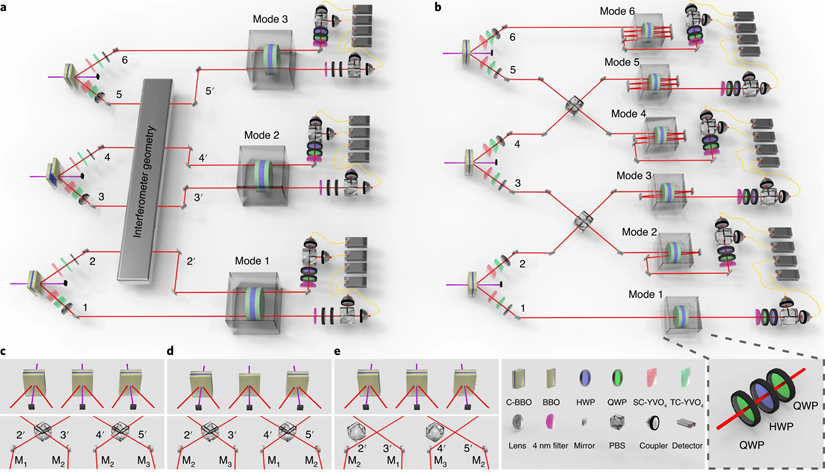Experiments First Verify Distributed Quantum Phase Estimation
Prof. PAN Jianwei and colleages from University of Science and Technology of China (USTC) of the Chinese Academy of Sciences (CAS) have achieved experimental verification of distribution quantum phase estimation for the first time. This work, which “constitutes a significant milestone” by the reviewer, was published on Nature Photonics.
Distributed metrology is a key tool to measure several locations from remote simultaneously with high precision, one typical task of which is the monitoring on stress field and temperature field of bridge and airplane.
In line with the development of quantum technology, metrology also entered quantum era. When targeting on measurement of multiple parameters distributed in space, distributed quantum metrology can enhance the sensitivity of measurements beyond the classical limits.
However, researchers are wondering how to achieve entangled states for optimal precision of multiparameter measurement, which was known as the ultimate Heisenberg limit.
In this study, PAN’s team designed the optimal measurement scheme using entangled photons, and demonstrated measurement of individual phase shifts and their average. The precision went beyond the theory limit of classical sensor.

Experimental setup on distributed estimation of quantum phase. (Image by LIU Lizheng et al.)
By considering both photon entanglement and coherence, Prof. PAN’s team further demonstrated linear combination of multiple phase shifts with the total number of parameters to measure up to 21. This combined scheme both enlarged the number of measurable parameters and enhanced the precision compared with using photon entanglement only.
This research assessed the precision of measurement in different entanglement strategies and provided the verification of the benefit of entanglement and coherence for distributed quantum metrology. It lays a foundation for future application of high-precision distributed quantum metrology.
Paper link:https://www.nature.com/articles/s41566-020-00718-2
(Written by WANG Jinhua, edited by JIANG Pengcen, USTC News Center)
Back
